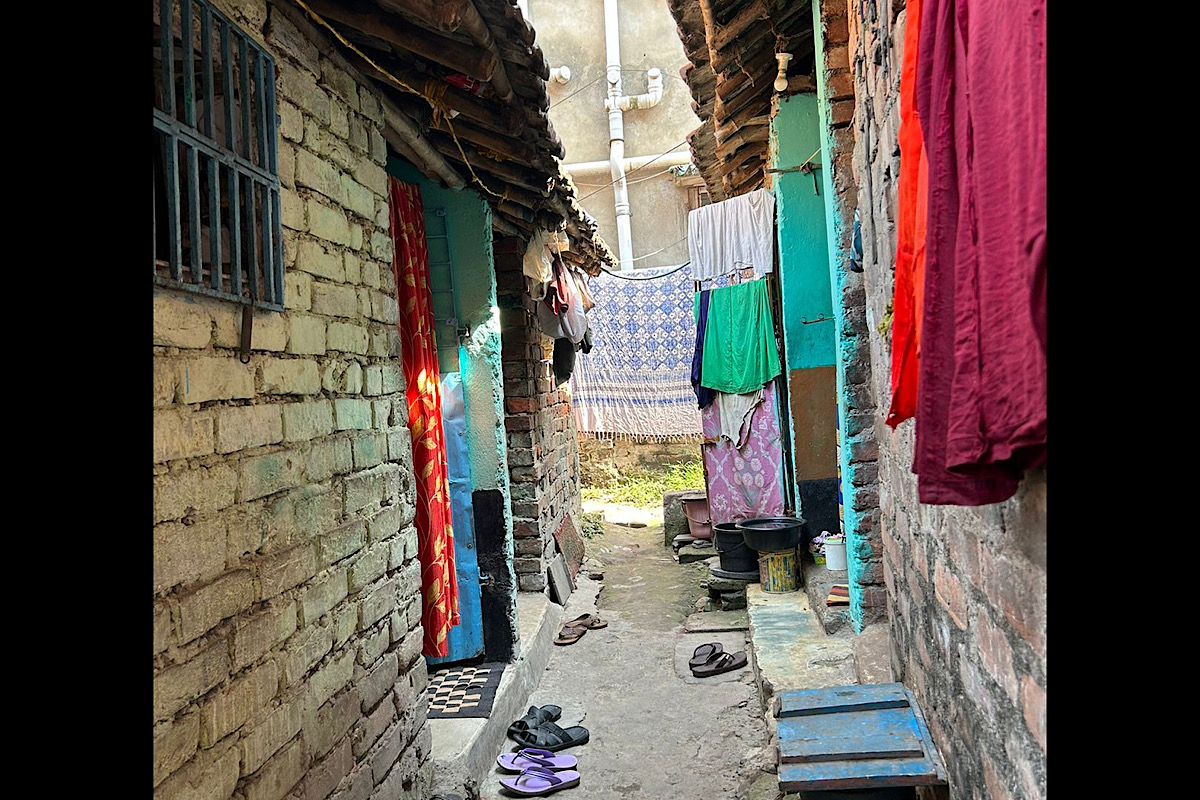Minister terms Budget anti-people
State minister Beccharam Manna today said the Budget is totally anti-farmer and anti-people.
Almost 1.4 million people (one-third of the population) live in the slum areas that surround Kolkata.

Slums Of Kolkata (Photo:SNS)
Kolkata, amidst all its bright hues, casts dark shadows of poverty, reminding one of the complexities that areas like the slums and its dwellers often face. Even though there are hurdles, this less fortunate community has a unique sense of togetherness and a sense of brotherhood amongst them.
Almost 1.4 million people (one-third of the population) live in the slum areas that surround Kolkata. Each day begins with the cacophony of bustling streets and families rising early in cramped one-room quarters to prepare for the day ahead.
Women start their day much earlier than the rest of the families, and the first thing that their routines include is going to the public water supply tank, where they collect their water supply for the day in buckets and mud pitchers (to keep it cool in summers). Then they collect their ration and vegetables from the market and start preparing for the day.
Advertisement
Mostly all of their husbands are local vendors or working as drivers and daily wage labourers. They start getting ready for the day as well, while the children, despite the odds stacked against them, eagerly wear their school uniforms with determination and hope for a better future.
Koushani, a third-grade student studying at Howrah’s Jogesh Chandra Girls School, dreams of becoming a doctor in the future. The meals at school don’t fill their stomachs, and yet they continue to dream.
She mentions, “One day I will become a doctor and treat everyone so that they don’t suffer from any kind of disease.”
Speaking to the mothers of young girls, they state their concerns about not being financially stable enough to support their higher education dreams. They will soon be married off to someone from their community when they reach legal age. The dreams they once dreamt will burn in the holy pyre they will sit in front of while getting married.
“We are poor people. We can’t dream of something so big. Our pockets simply won’t allow it. Even though I want my daughters to study and do good jobs, I have to get them married soon,” states Sayani Datta, a mother of two twelve-year-old girls.
The challenges faced by slum dwellers in Kolkata are multifaceted. One of the most pressing issues that was observed while speaking to the residents was the lack of adequate sanitation and clean water, leading to several health concerns and the spread of diseases. Access to proper and quality education is another challenge. Overcrowded schools and limited resources halt the overall learning process.
Due to a lack of education, employment opportunities are scarce, pushing many residents to seek livelihoods in the informal sector, where income stability is next to nothing. There is no surety that they will get paid, and they are often silenced against protesting because power dynamics come into play. The absence of proper housing infrastructure exacerbates vulnerabilities, especially during monsoons and natural disasters.
Banani Chakraborty, a woman in her 40s who lives with her husband cramped up in a small, damp quarter, talks about how the family income doesn’t even cover their medicine costs, let alone household expenses.
Despite such pressing situations, the residents of these low-income neighbourhoods showcase remarkable resilience and a strong sense of community. Neighbours come together to support each other during times of need, forming tight-knit bonds that serve as pillars of strength for them.
“Life here is tough, but we know we have each other. Unlike people living in big houses, we have a sense of solidarity. We are there for each other through all our joys and sorrows. It’s like one big family,” mentions Parul Das, a long-time resident of the slum.
Women work tirelessly and play a pivotal role in the community, often taking up day jobs as cooks, maids, babysitters, cleaning staff for organisations, etc., to supplement the family income. Certain private NGOs work tirelessly to provide healthcare and skill development programmes to improve their quality of life.
“The challenges are many, but I want my children to have a better life than mine. Education is very important. I will try to provide them with opportunities I didn’t get. Even though their father wants them to be married off, I don’t see them as burdens. They are my future,” said Sumitra Haldar. She dreams of a better future for her two daughters and three sons. Her husband works as a labourer on construction sites and wants their sons to join in for help when they reach the proper age.
While there are a lot of challenges to address, small steps can make a big, positive impact. Investments in infrastructure, healthcare and education can change their lives for the better. Certain government schemes for the poor do exist, especially for women, but their lives of struggle are not fully alleviated by these. As a society, we should work together to create a more inclusive city that provides equal opportunities to thrive and contribute meaningfully to the community.
The writer is an intern at The Statesman, and is a student at Symbiosis Centre for Media and Communication.
Advertisement